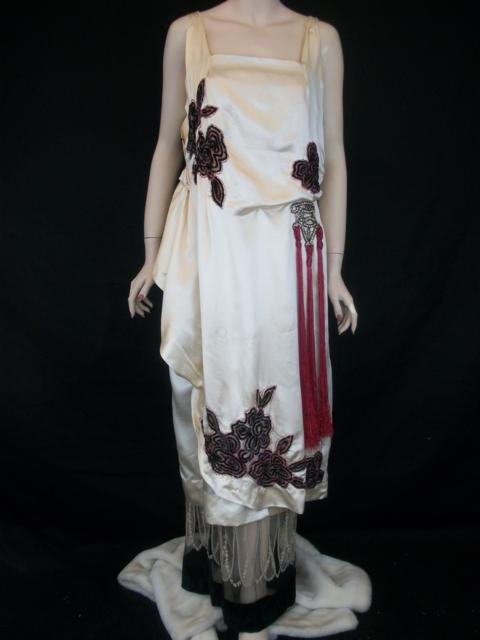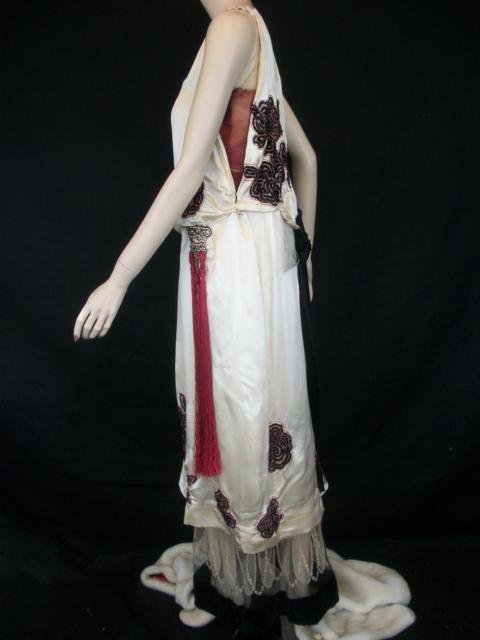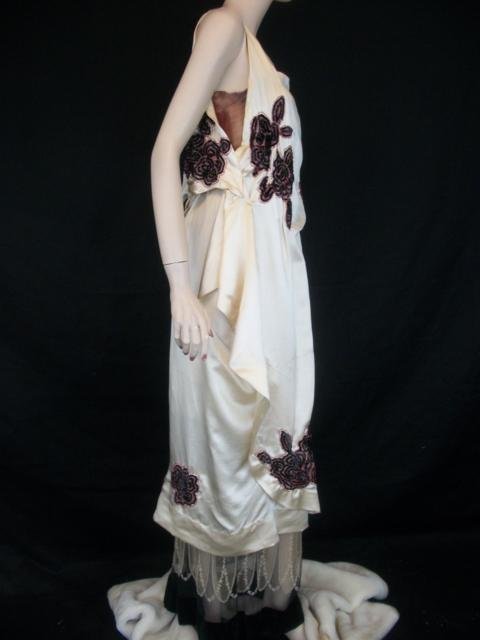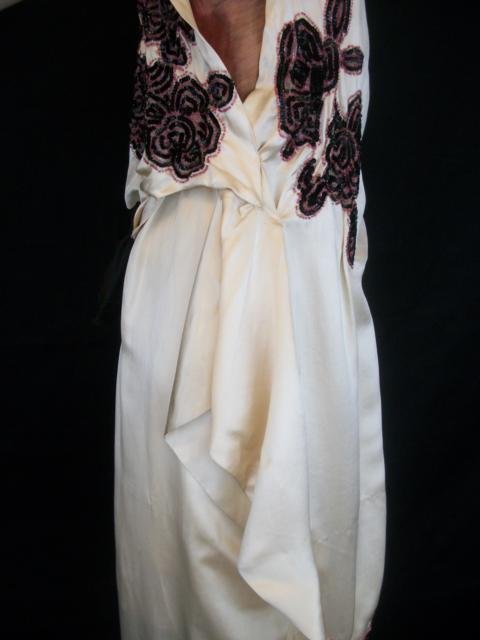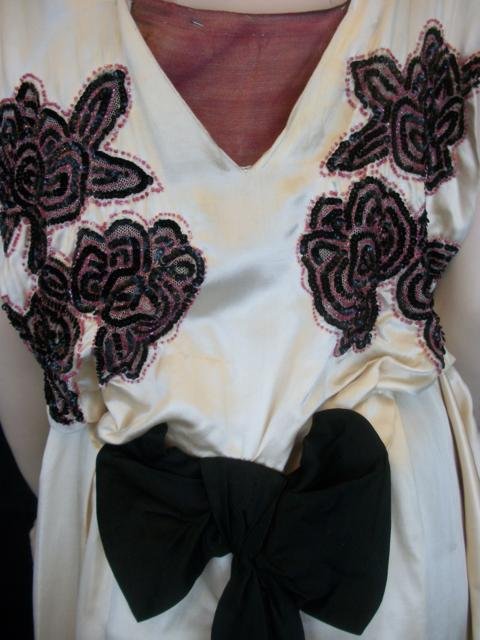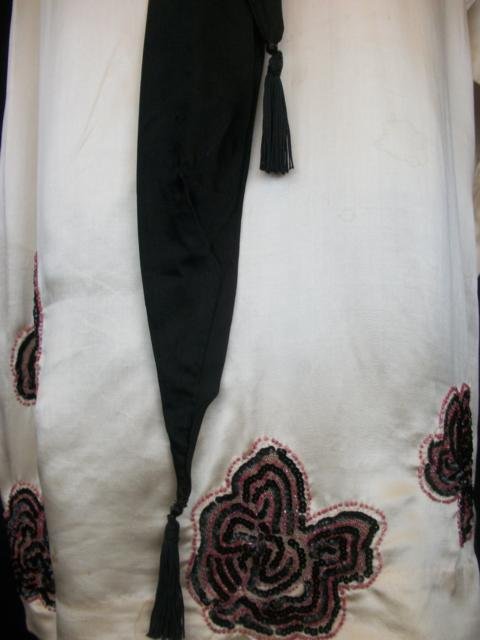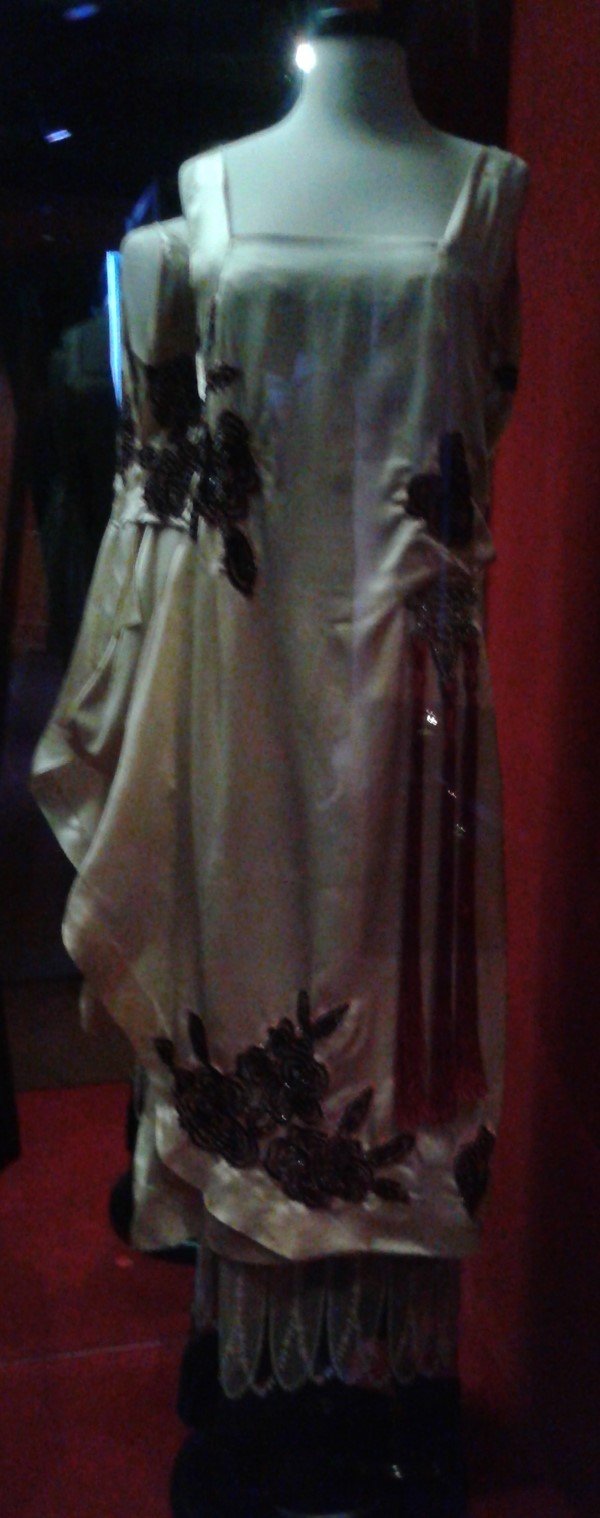
Singapore Sling
Here is an ethnic-inspired cream satin ball gown from 1918. This dress demonstrates the slow progression from the S-curve corset of the early 20th century to the tubular silhouette of the mid-1920s. It’s blousy bodice calls to mind the prewar vogue for two-piece ensembles based on the ubiquitous shirtwaist. It’s straight skirt looks forward to the decade-long trend toward a long and lean female form. The underskirt features lace with embroidery and velvet piping to give the hint of a shorter hemline – a glimpse of emerging trends.
The silk is highly embellished with black sequins and ruby beads making large floral designs. The front has a low, square neckline, and the back is a plunging V shape. Also note the garment’s Asian influences. The draped nature of the dress calls to mind the Japanese kimono with the tasseled Tiffany-set jeweled appliqué and bow closure serving as an obi – the kimonos traditional sash. Three long, crimson silk, fringed tassels hang from the left waist.
Red lamé lining shows in the V of the back and sides. Also in the back a loose, slightly dropped waistline is caught up with a large black silk bow with tasseled ends. The right side of the skirt drapes asymmetrically then shows a floor-length, narrow cream underskirt with lace and embroidered net and wide, black velvet trim.
The Ballets Russes, Orientalism, Egyptian, and other ethnic influences were evident in fashion designs of the mid-teens into the 20s. Sometimes a mix of design styles can be seen on one gown and are not necessarily mutually exclusive, just as the Ballets Russes did performances in traditional peasant garb as well as Arabian, Egyptian, and Asian fantasies. One photo shows this gown on display in the Ready to Roar exhibit at the Mob Museum in Las Vegas.
Additional information
| Measure | Bust: 38" |
|---|
$4,500.00
Buy Now
Fill out the form below to buy this product

